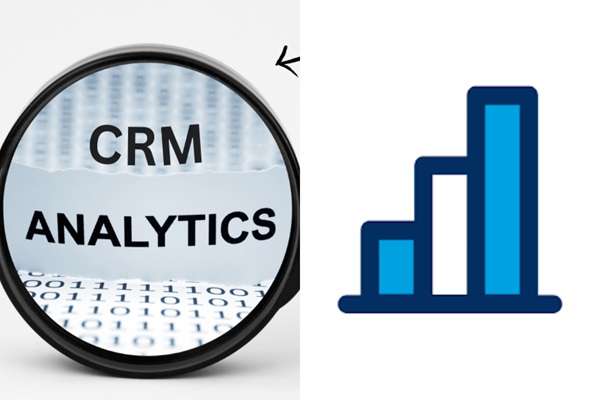
Keeping a competitive advantage in the fast-paced world of business requires a grasp of customer behavior, preferences, and trends. In this process, Customer Relationship Management (CRM) analytics is essential since it uses data to give insightful analysis that informs strategic choices. This article examines the value of CRM analytics, the instruments and methods used in its implementation, and the ways in which companies may use these insights to maximize customer experiences and commercial results.
The Significance of CRM Data
CRM analytics is the methodical examination of client information gathered from a variety of sources, including sales, marketing initiatives, customer service exchanges, and more. Analyzing this data to identify patterns, trends, and correlations can provide businesses with important insights about the behavior and preferences of their customers.
CRM analytics are important because they may be used to:
Improved Customer Understanding: Through the examination of CRM data, companies can have a thorough grasp of the requirements, inclinations, and purchasing patterns of their clientele. Customized client interactions and focused marketing strategies are made possible by this knowledge.
Boost Customer Retention:
Proactive retention methods are made possible by identifying at-risk or likely-to-churn consumers. Businesses can decrease attrition rates and increase customer loyalty by responding to consumer complaints and providing tailored incentives.
Maximize Marketing and Sales Efforts:
CRM analytics facilitates the identification of high-potential leads, the determination of which marketing channels provide the best return on investment, and the streamlining of sales procedures for increased efficacy and efficiency.
Read Also: Seven benefits of investing in real estate
Promote Product and Service Innovation:
Based on consumer input and market demand, insights from CRM analytics can guide the creation of new products and the improvement of existing services.
CRM Analytics Data Integration and Warehousing Tools and Methods:
It is essential to consolidate CRM data from multiple sources (such as customer support platforms, marketing automation technologies, and sales platforms) into a single data warehouse or repository. HubSpot, Microsoft Dynamics CRM, Salesforce, and other tools make data management and integration easier.
Data mining and machine learning:
Within CRM data, hidden patterns and relationships can be found through data mining techniques like clustering, classification, and association. Machine learning algorithms are able to segment clients based on characteristics and behaviors, forecast customer behavior, and suggest the best course of action for them.
Predictive analytics refers to the use of models that predict future customer behaviors, such as lifetime value, churn probability, and likelihood of purchase. Proactive decision-making and tailored customer engagement tactics benefit from the use of these models.
Customer Segmentation:
Segmenting customers based on demographics, behavior, or transactional history allows businesses to tailor marketing messages and offerings to specific customer groups.
Sentiment Analysis:
Natural language processing (NLP) techniques analyze customer feedback from surveys, social media, or support interactions to gauge sentiment. Understanding customer sentiment can help in addressing concerns promptly and improving overall customer experience.
Visualization and Reporting:
CRM analytics insights are visualized using tools for data visualization like as Tableau, Power BI, or Google Data Studio. Reports and dashboards make difficult-to-understand data easily readable, empowering stakeholders to act swiftly and decisively.
Using CRM Data to Drive Business Success
Customer Journey Mapping: From awareness to purchase and beyond, the customer journey can be mapped with the aid of CRM data analysis across touchpoints. Businesses may improve customer experience and streamline procedures by having a thorough understanding of consumer pain points and touchpoint effectiveness.
Personalization and Targeting:
Customize marketing messaging, product suggestions, and consumer interactions with the use of CRM analytics. Communications that are customized to the recipient’s interests and behavior boost engagement and conversion rates.
Churn Prediction and Prevention:
Use predictive analytics to spot early indicators of consumer discontent or churn risk. To keep important clients, put proactive retention methods into place, such loyalty programs or targeted offers.
Campaign Optimization: Use CRM statistics to gauge a marketing campaign’s efficacy. To make the most use of your marketing strategy and money, analyze campaign ROI, customer acquisition expenses, and conversion rates.
Constant Improvement:
The process of CRM analytics is never-ending. Keep an eye on important metrics, evaluate performance in relation to objectives, and adjust plans in light of fresh information and market developments. Maintaining competitiveness and relevance in the market requires constant improvement.
In summary
CRM analytics gives companies the ability to use data to improve customer understanding, streamline processes, and spur expansion. Utilizing methods and instruments like customer segmentation, predictive analytics, and data integration, organizations can obtain practical insights that enhance decision-making within divisions. CRM analytics is essential for corporate success in today’s data-driven environment, as it may improve customer experiences, maximize marketing efforts, and boost profitability. Organizations can remain adaptable, customer-focused, and competitive by embracing CRM analytics as a strategic tool in an increasingly competitive landscape.








